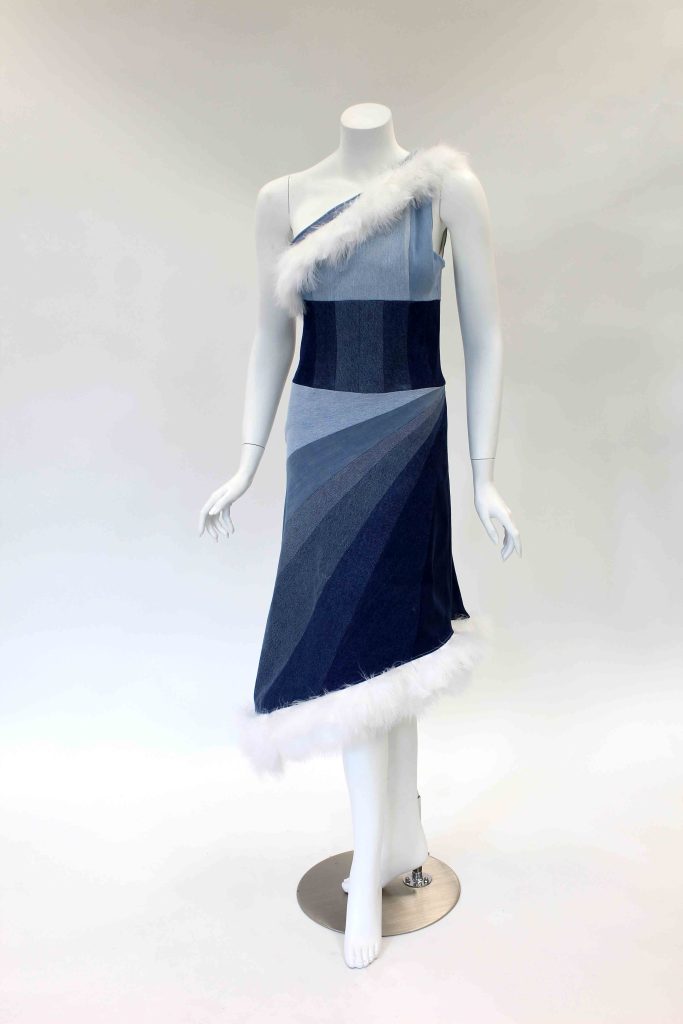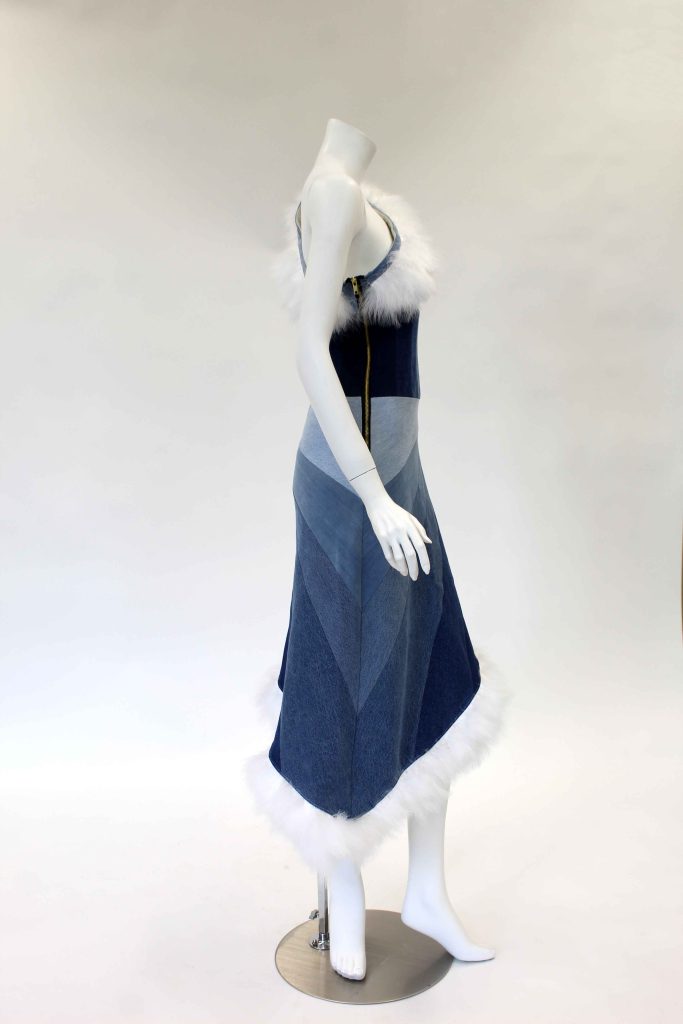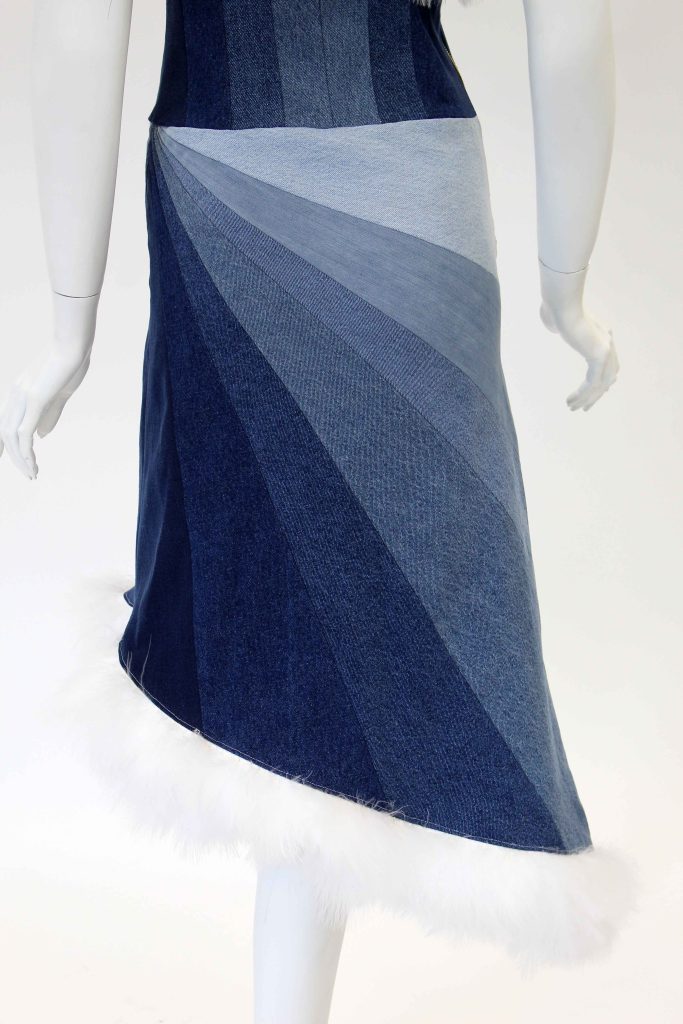TAM 4980: GINGER PROJECT
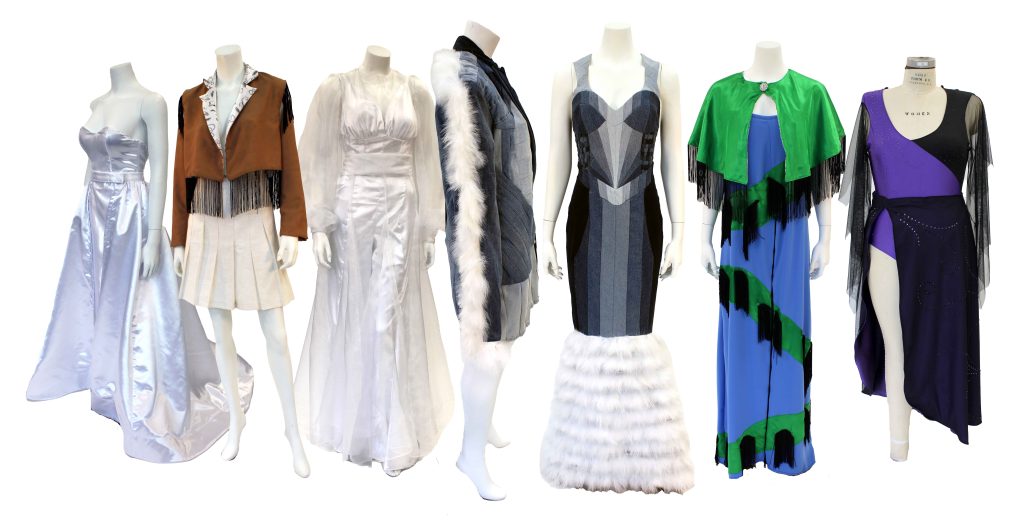
STEP 1: GINGER ROGERS INCLUSIVE DESIGN PROJECT INTRODUCTION
Students in TAM 4980 Apparel Production Management were tasked with developing an inclusively designed apparel line as part of a senior capstone project. Currently, the apparel industry often focuses on the average consumer, referenced in both fit and sizing as well as social and cultural needs and wants. Therefore, within the apparel marketplace, there are many underserved consumer markets, including adaptive apparel for people with disabilities (PWDs), plus-size, gender-neutral, transgender, or gender-transitioning apparel, and age-related, racial and ethnic and religious needs and wants, and cultural accommodations. New inclusive apparel designs were conceptualized and developed to fill apparel categories not currently meeting the needs of underserved consumer groups. As part of the research process, students were tasked with integrating marginalized consumer groups into the design process by directly engaging with users from one or more of the aforementioned consumer groups.
Designing and developing apparel products for underserved consumers requires user-focused insight, including research and background knowledge of the consumer’s apparel challenges. Furthermore, apparel products for underserved consumers must include the user in the design process to ensure the user’s needs are met. With apparel brands needing help finding their place with consumers demand more inclusivity and diversity, a project focused on this consumer population is well-suited to prepare future designers and product developers for a highly competitive industry.
As part of an initial introduction to the project, students were provided the unique opportunity to view and physically examine a selection of over sixty garments from the Missouri Historic Costume and Textile Collection whose historic design elements could be used to inspire contemporary adaptive and inclusive apparel; they were also introduced to the Ginger Rogers Collection of costumes and archives as an additional element of the project. Four student groups incorporated influence from Ginger’s costume and career into their inclusive designs and are featured below.
STEP 2: LINE REVIEW CONCEPT BOARD AND WORKING DRAWINGS
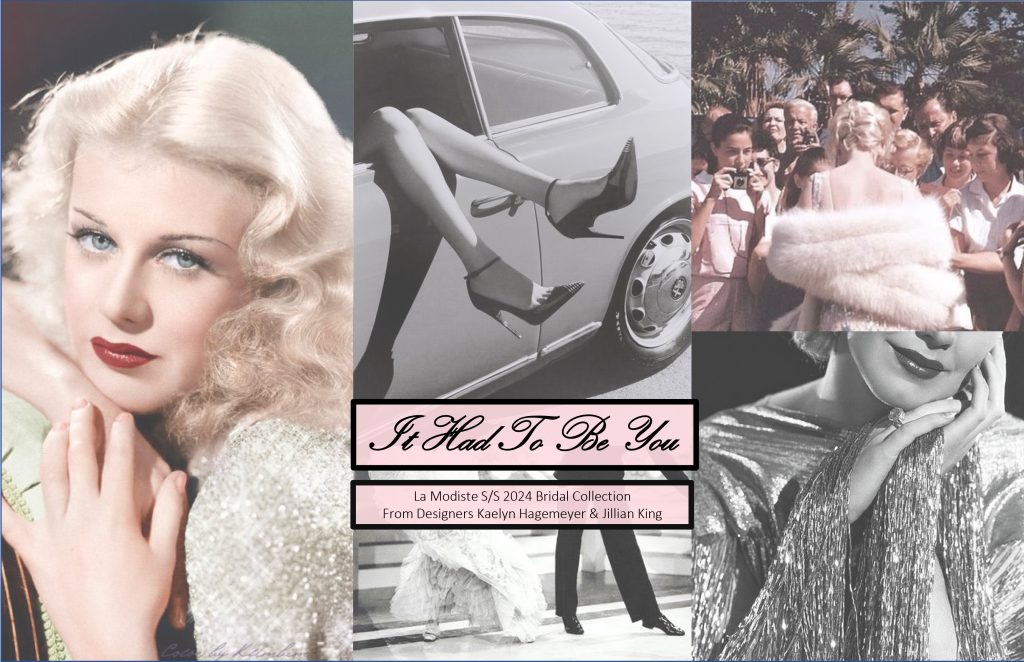
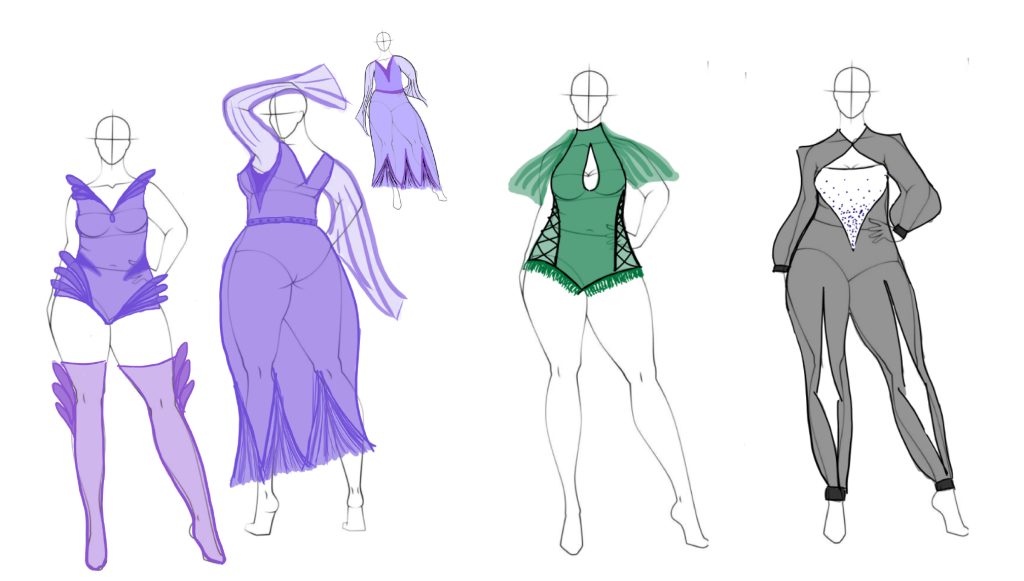
STEP 3: LINE BUILDING AND SAMPLE AND PATTERN DEVELOPMENT

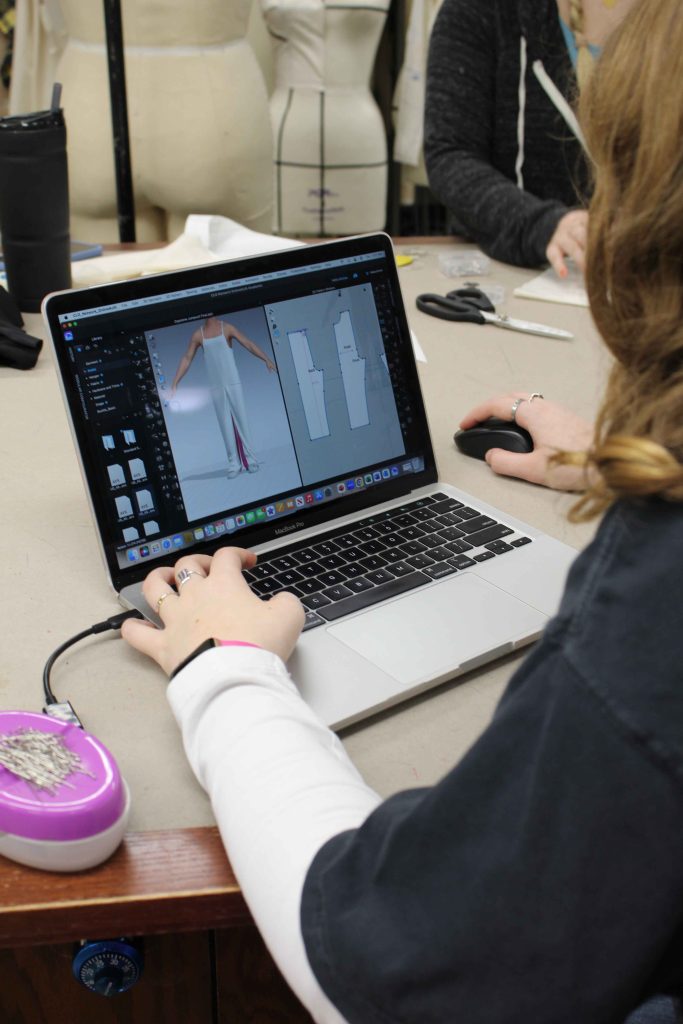
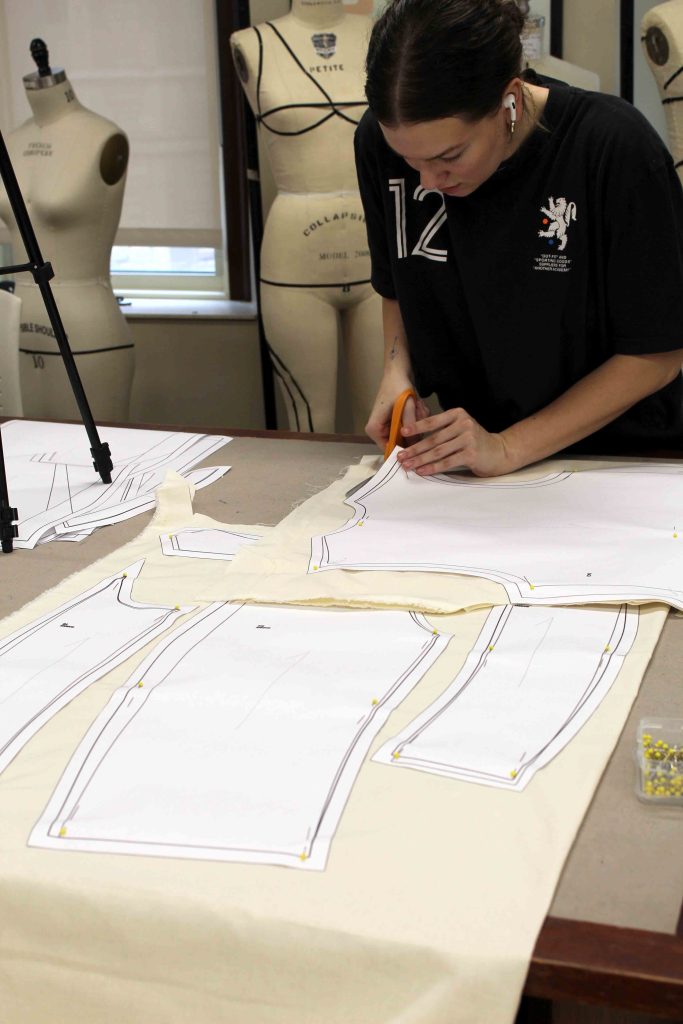
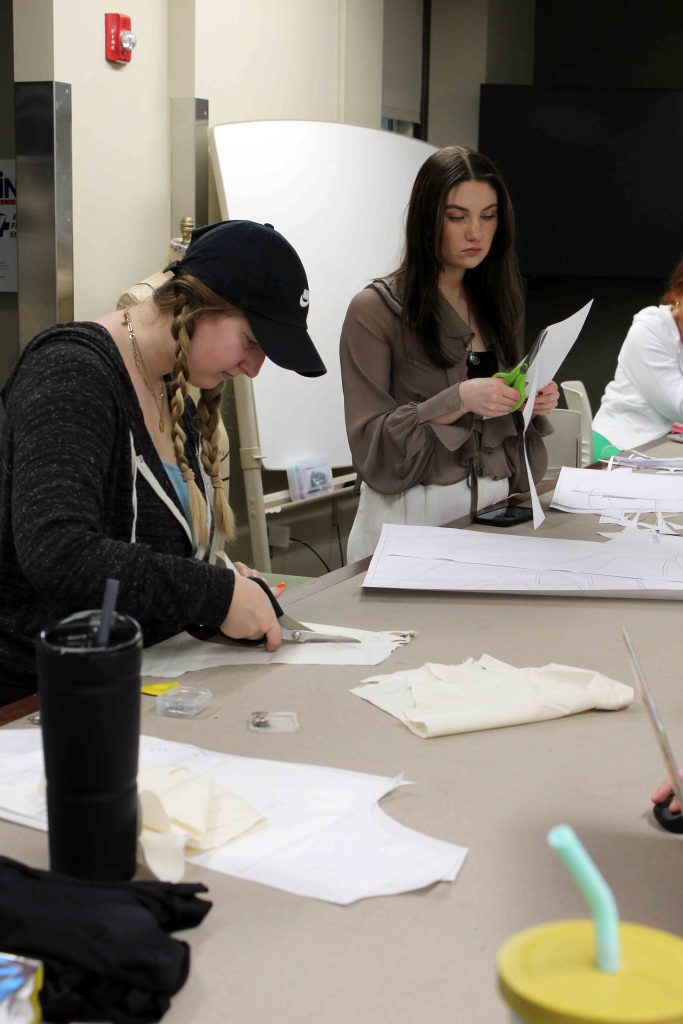
STEP 4: FINAL PRODUCTION SAMPLE CONSTRUCTION
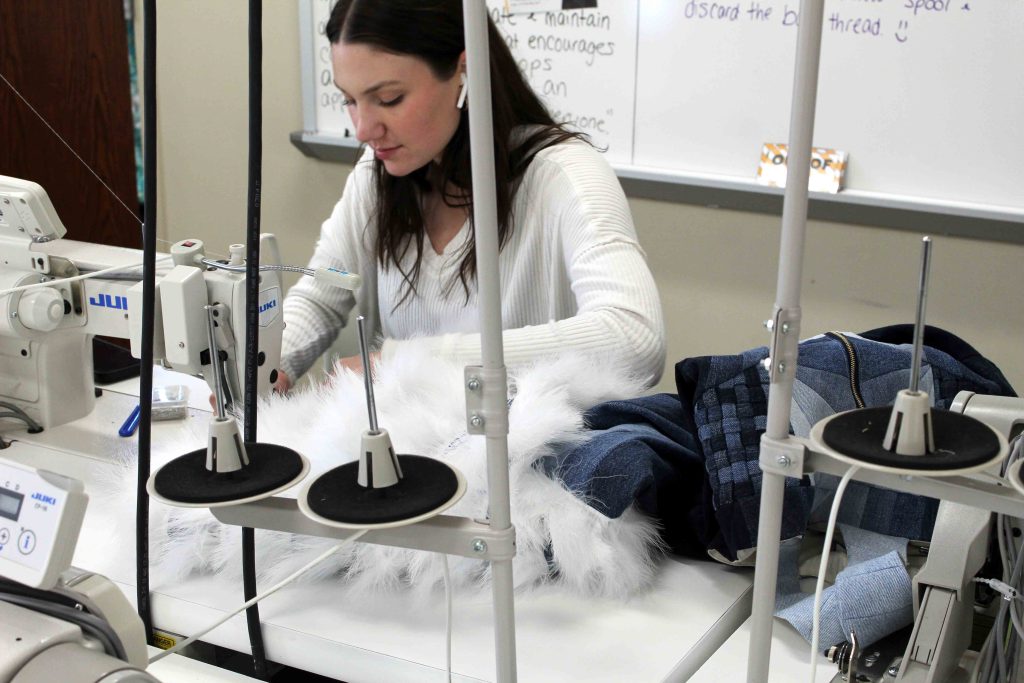
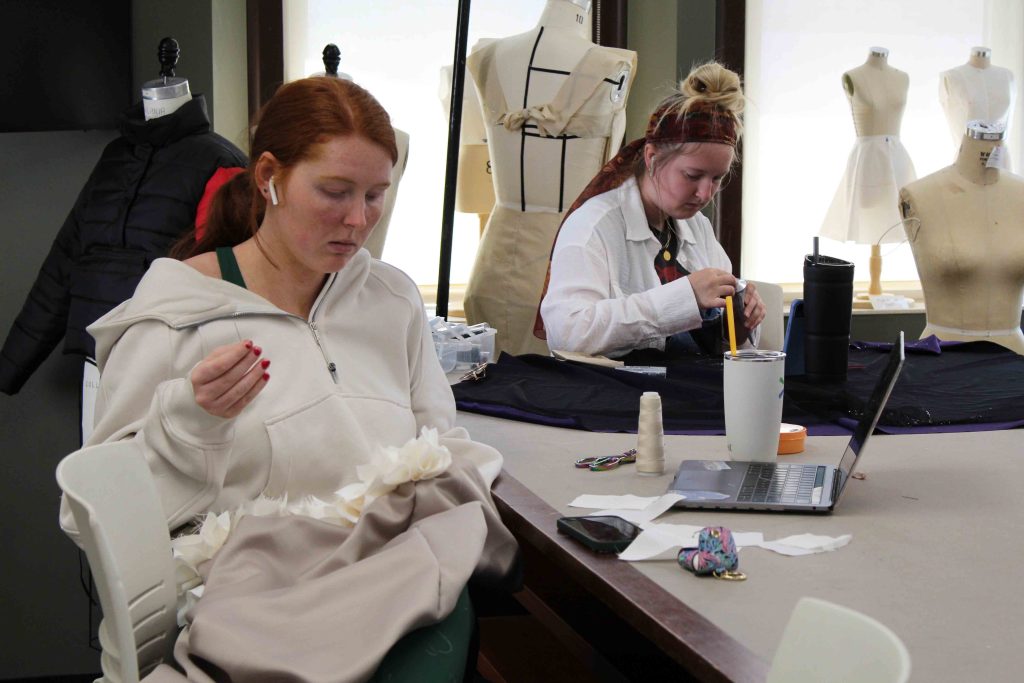
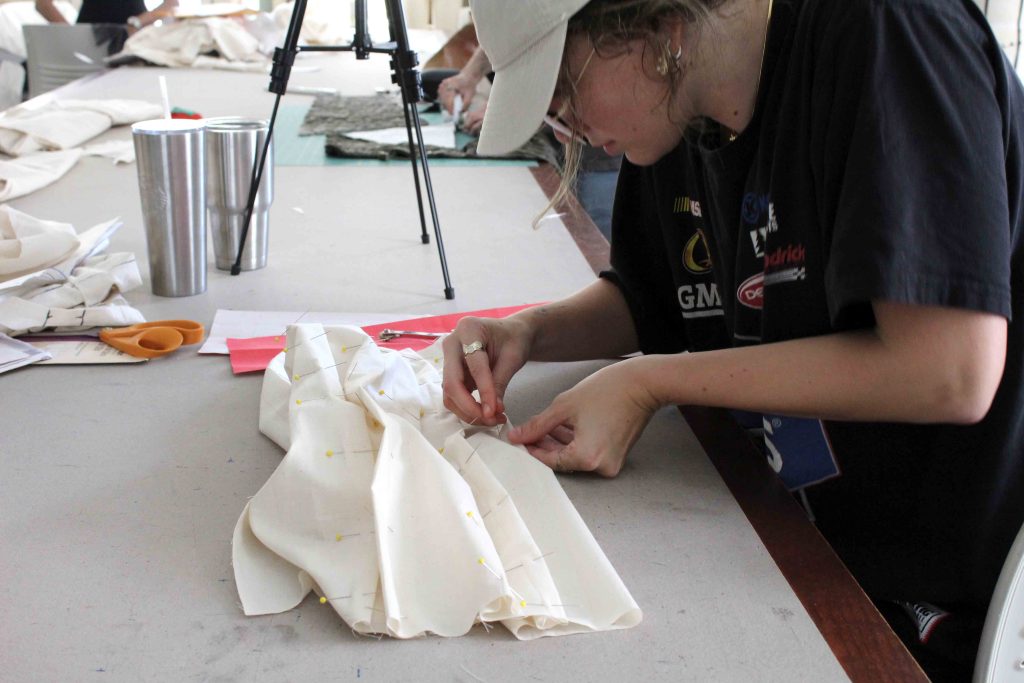
STUDENT DESIGNS GALLERY
Alphabetical Order: Taylor Bonomo and Sydney McClintock Mara Fenwick; Jillian King and Kaelyn Hagemeyer; Millie Prechtel and Lindsey Fall

TAYLOR BONOMO AND SYDNEY MCCLINTOCK“Transcendence”
INCLUSIVE DESIGN: “Our brand Transcendence is a gender inclusive brand with a goal of providing statement pieces for people of all genders, pieces that are transformable and can be as fluid as someone’s gender. These pieces include both traditional masculine and feminine features allowing for someone to transform the designs to better match their gender expression at the time. We aim to provide statement pieces that are bold and help the user express themselves through design and color. Our line of transformable clothing will ultimately allow the consumer to buy fewer pieces through their life and invest in quality pieces that can have many lives. It will create value in the marketplace, especially for LGBTQIA+ individuals, a market often overlooked. Our goal is to create a line for everyone to freely express themselves, whatever that means to them, utilizing transformable clothing and bold design to give our consumer what the market currently lacks.”
USER-CENTERED DESIGN APPROACH: “Before beginning our design process, we interviewed several people on their relationship and experiences with fashion, especially in a queer or nonbinary space. Gaps include a lack of statement pieces, color, fitted garments, and gender fluid clothing. Through our interviews, consumers agree with this research. One individual talked about how overalls were a popular clothing item in the nonbinary community, so we created our own take on that overall and added extra features to make it even more inclusive.”
The first look, created by Taylor Bonomo, consists of a lightweight fringe blazer with detachable elements and a transformable bottom garment. The reversible blazer features detachable sleeves and jacket hem; the interior lining highlights a one-of-a-kind Ginger Rogers print designed by Sydney McClintock. The bottom garment includes an interior crotch panel that can be snapped into place to create a short/skirt combination.
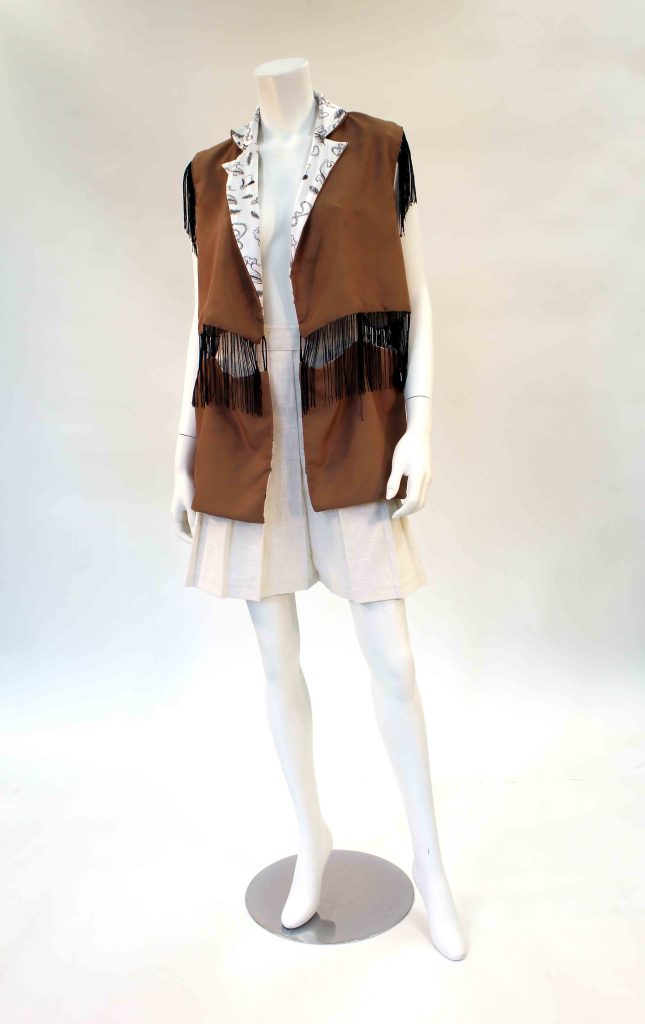
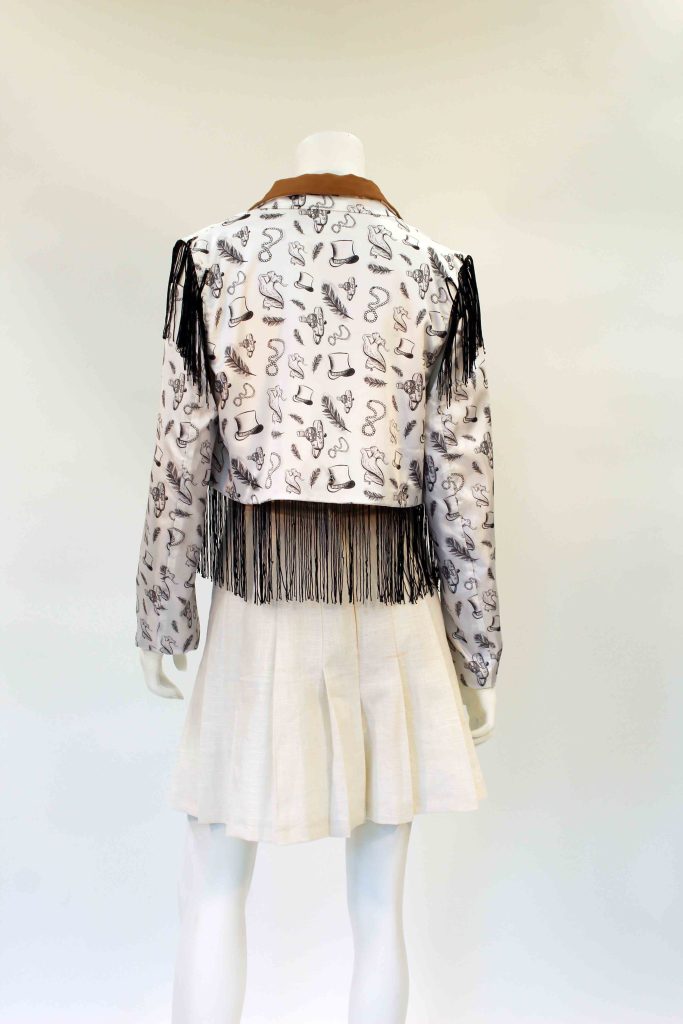
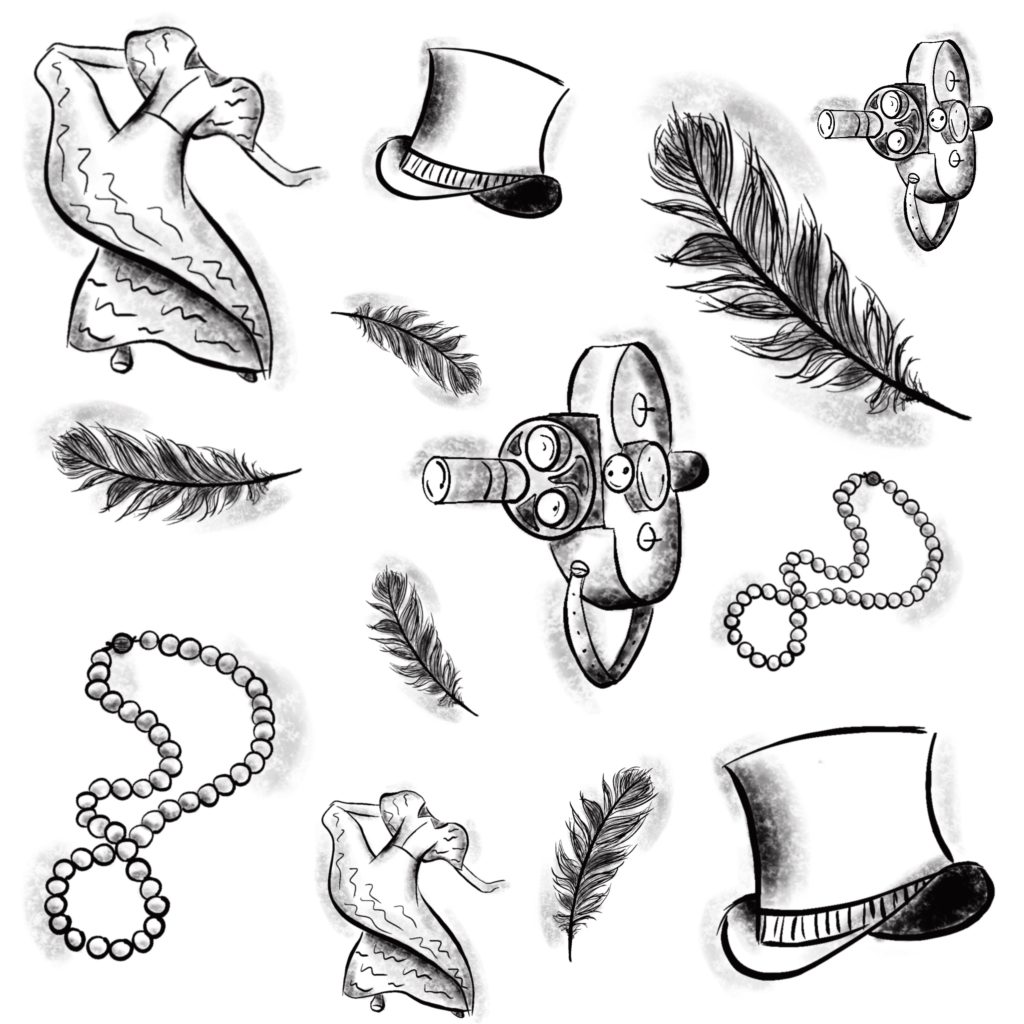
The second look, created by Sydney McClintock, consists of a transformable jumpsuit that can be worn as either a dress or bifurcated jumpsuit through the use of zippers, and a separate fringe shawl lined with a hand-drawn Ginger Rogers print. The garment pattern was created and printed in CLO3D to better visualize the jumpsuit.
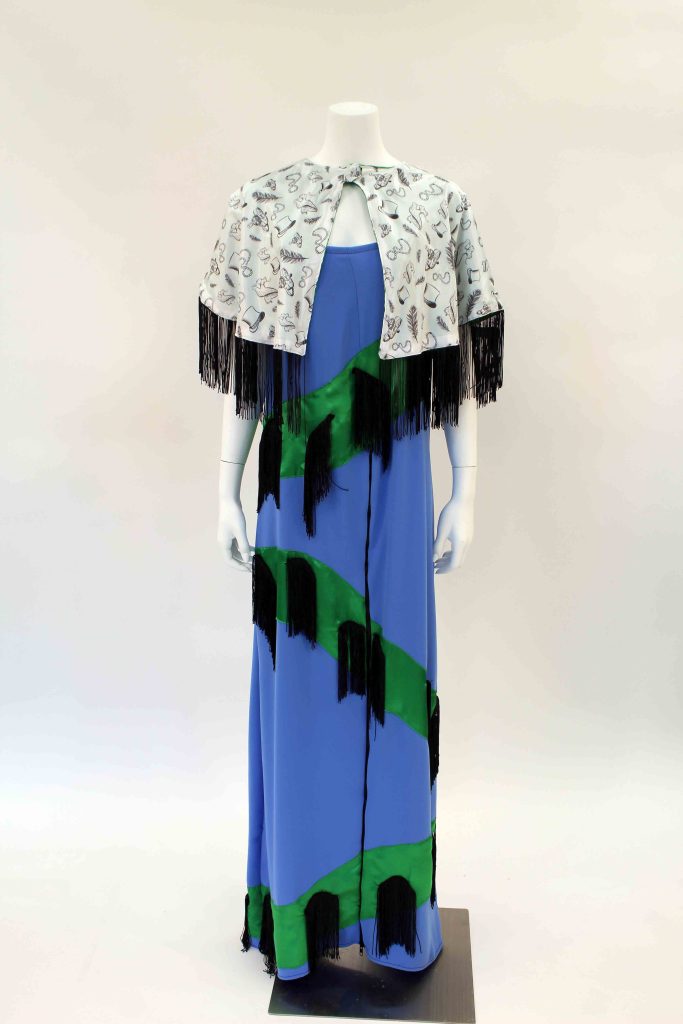





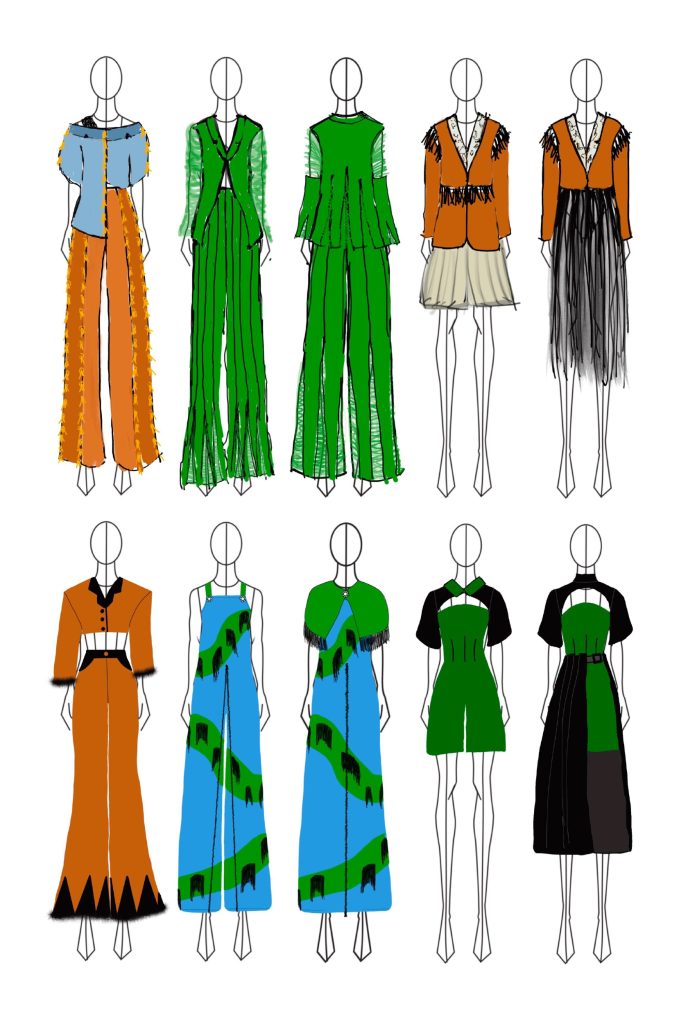
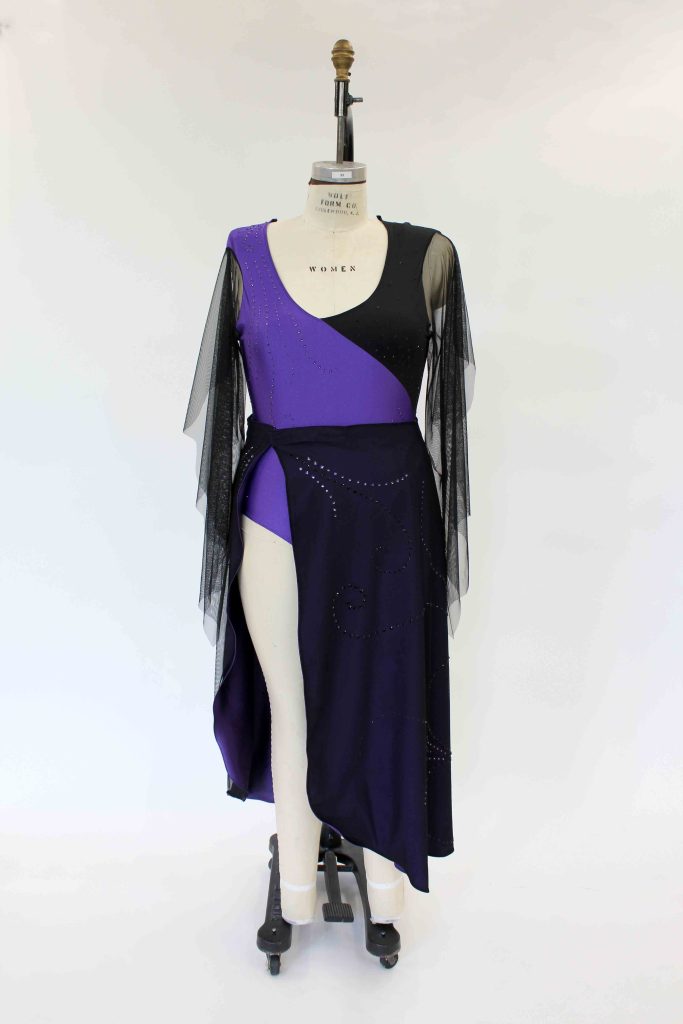
MARA FENWICK “Puttin’ on the Ritz”
INCLUSIVE DESIGN: “The line “Puttin’ on the Ritz” is a plus-size dancewear line. There is a major lack of size inclusivity within the dance industry. Market research revealed that there are currently a limited number of brands that offer dancewear of any kind to larger sizes. I mostly see increased sizing in tights and skirts, which is definitely a key factor in dancewear, but there were little to no large sizing options for leotards and such.
The definition of the phrase “puttin’ on the Ritz” is to dress very fashionably or make a show of luxury or extravagance. My brand will inspire empowerment within women, telling them to embrace their bodies for all that they are, and show them how alluring they can be. The brand will be used to promote body positivity and break down the mental stigma we have about our bodies. I want to vocalize the issues and bring awareness to them [through social media.] Pairing unique, beautiful and sexy garments with this voice will be the reason this company is successful.”
USER-CENTERED DESIGN APPROACH: “I wanted to recruit someone who was not only plus size but also within the dance world. I felt it was important to get an opinion and ask about the user’s experiences in both everyday life and while dancing. Luckily, I was put in contact with a woman who works at the Mizzou Theater Department, dances, and works in the costume shop in the theater program. It was a perfect match.”
The main inspiration for my line came from Ginger Rogers’ Broadway career. I will utilize the theme of old Hollywood glam, bring it to the costume wear/dance wear, and make it a larger size. I think it will look elegant to incorporate the 1930s and ‘40s old Hollywood hourglass shape and pull that inspiration from Ginger Rogers and other historically significant women in the media from that time, but just in a bigger size.
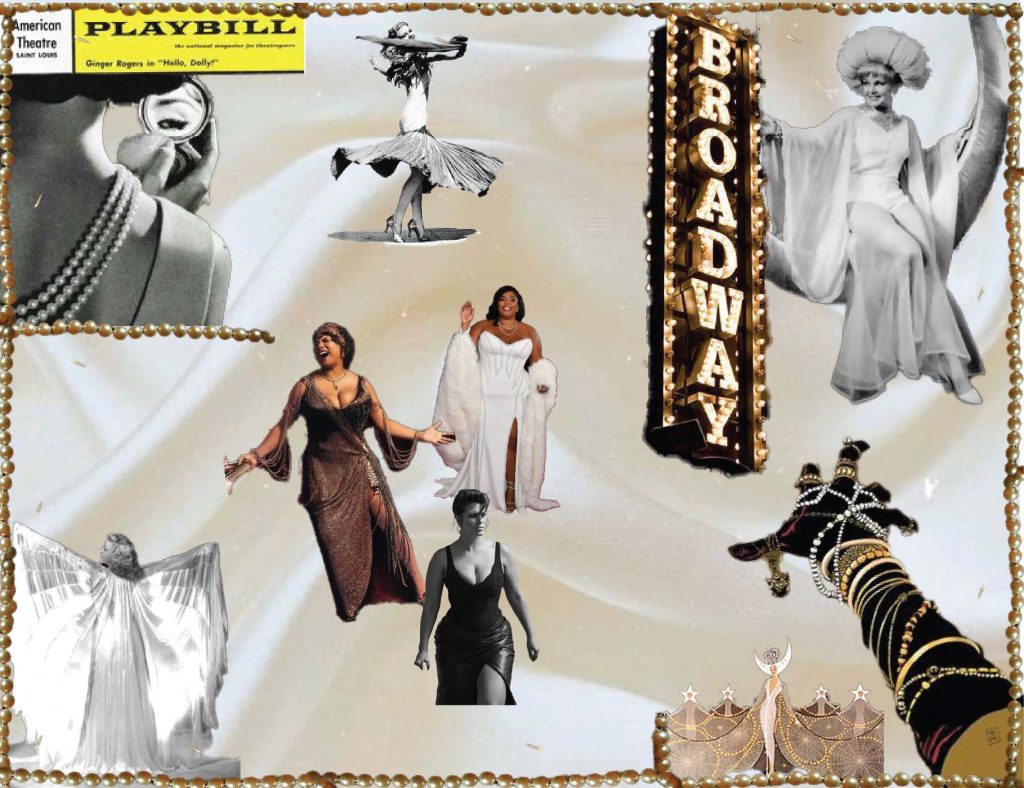
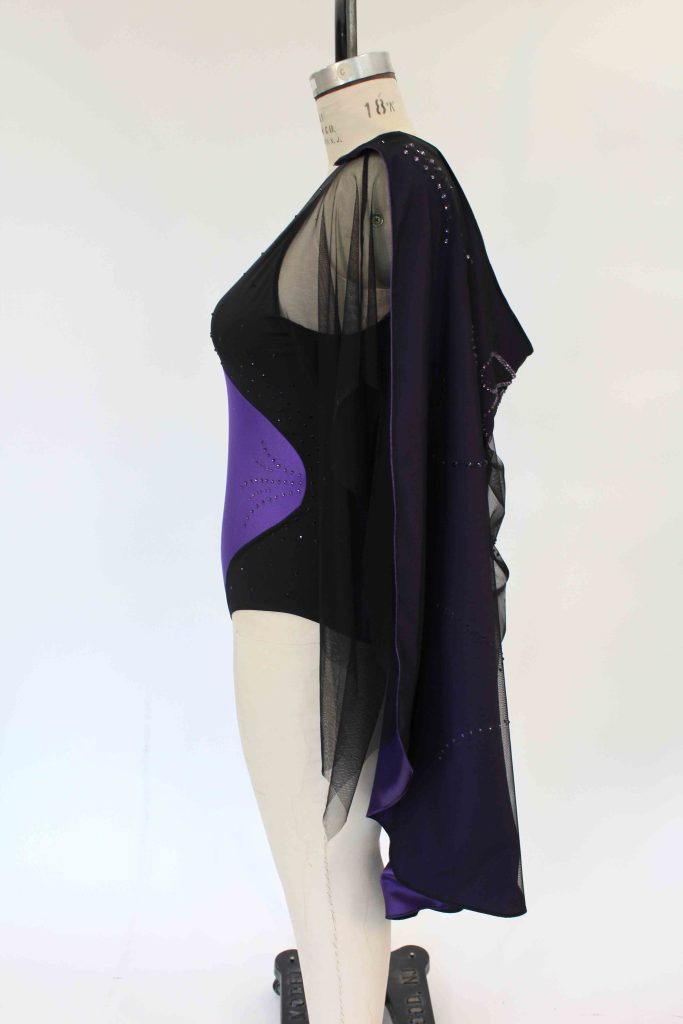
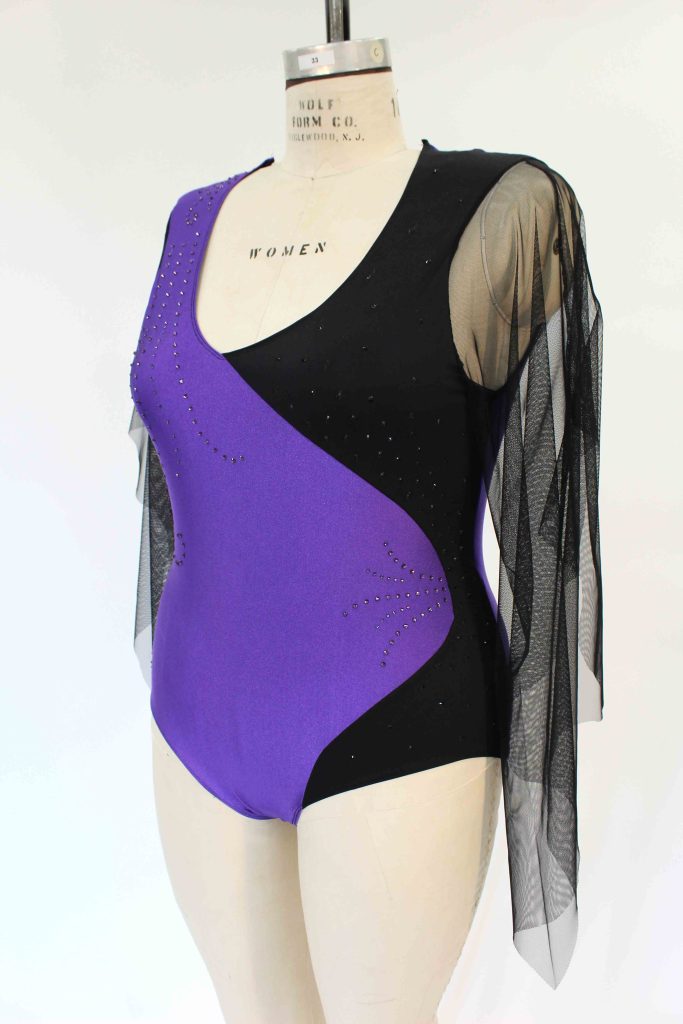
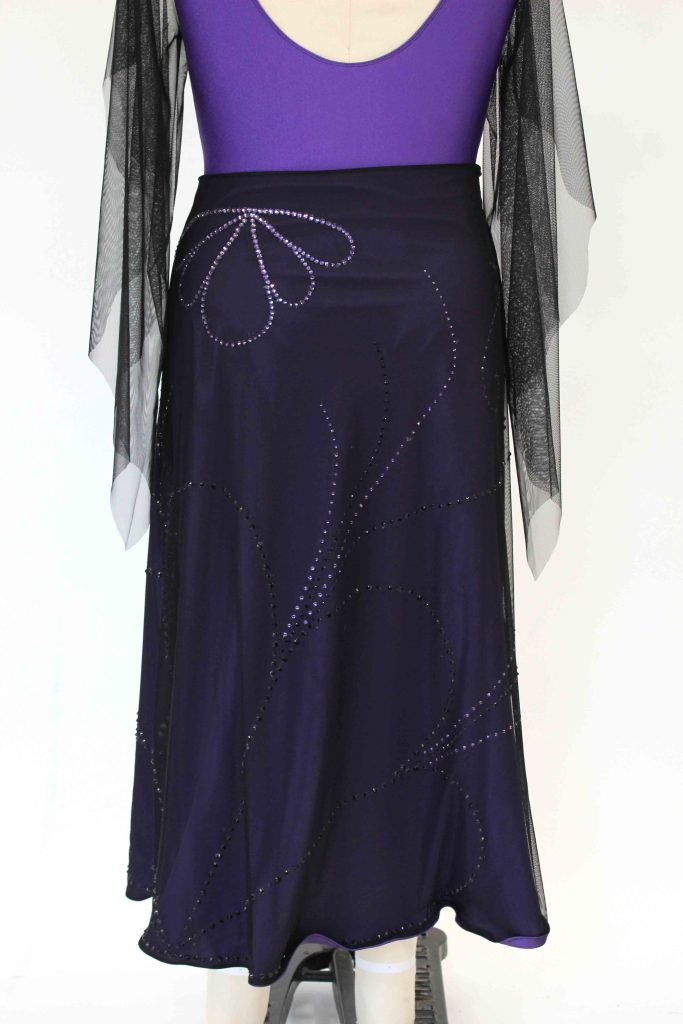
LINE DETAILS: “Initially I wanted gemstone tones and possibly silver and gold as colors to add that old glam look and to tie in the textures of beading, rhinestones, glitter, sheer fabric, and possibly sequins. I liked the idea of these tones because they are strong and bold. I wanted the color to symbolize a strong woman because Rogers tirelessly advocated for women’s rights and equal pay her entire career. Through researching some color meanings, I found that internationally, purple is a color for symbolizing women. Historically, the combination of purple, green and white to symbolize women’s equality originated from the Women’s Social and Political Union in the U.K. in 1908. Purple signifies justice and dignity. Green symbolizes hope. I looked on WGSN to see what kind of colors would be trending in the coming year and found that deep emerald and midnight plum were going to be in style, perfect for my line. Flexible fluidity is also up and coming. By that I mean soft draping that enables flexible fits and is flattering across a broad range of body types, [such as] playing with fastenings and adding details, for example adjustable soft ties and cowl necklines to give wearers the option to control the amount of skin exposure. This kind of mindset of design is perfect for my line, working with different draping techniques and fabrics to create something flexible and easy to move in and adding in those adjustable features. Circular magnets encased in plastic were used in the shoulders, waistband and skirt waist, an option of closures that can increase or decrease [the size] of a specific area of the garment. An elastic waistband was also used at the back waistline of the leotard. The line will offer leotards, sleeves, skirts and more. These items will be modular, so there will be different uses for them, and different ways to style them for more diversity.”


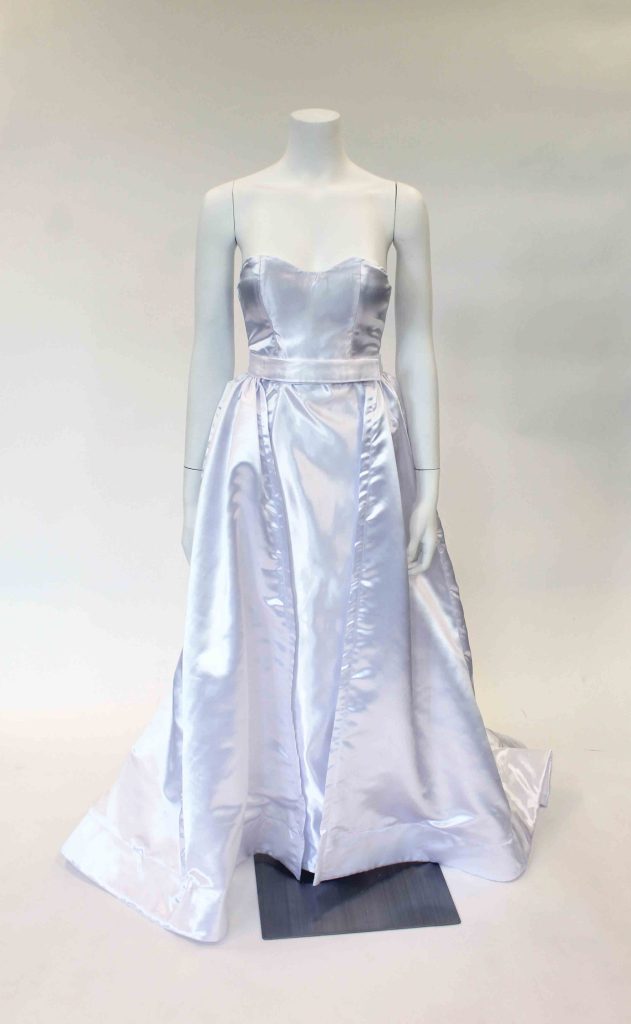
JILLIAN KING AND KAELYN HAGEMEYER“It Had To Be You”
USER-CENTERED DESIGN: “As we design, we want to keep our consumer at the forefront of our design process, as well as considering the wider consumer market. To accomplish this, we are focusing on size inclusive closures, making our sizes slightly adjustable with corset backs, and loser silhouettes to provide comfort for a range of sizes. We are also providing looks with many variations of those same pieces. This will allow for the consumer to mix and match items to create their own personal bridal look.”
INCLUSIVE DESIGN: “Bridal sizing, like other formal wear sizing, almost always needs alterations to attain the perfect fit. Styles are frequently designed and drafted in a small size, and then graded to be “size inclusive”. This is not size inclusive. The dress was only designed with one body type in mind, and no amount of grading can make it perfect for all sizes.
It Had to Be You tries to fill this gap with comfortable inner supports, corset backs, and modular pieces for the perfect fit for every bride. We are offering built-in, leotard type support in traditionally unsupportive silhouettes. The lacing of a corset back allows for the wearer to bring ease to whatever area they prefer. We aspire to provide modest options, using layering and removable pieces to offer coverage, versatility, and customization. Every bride should feel confident and beautiful on their wedding day, size included.”
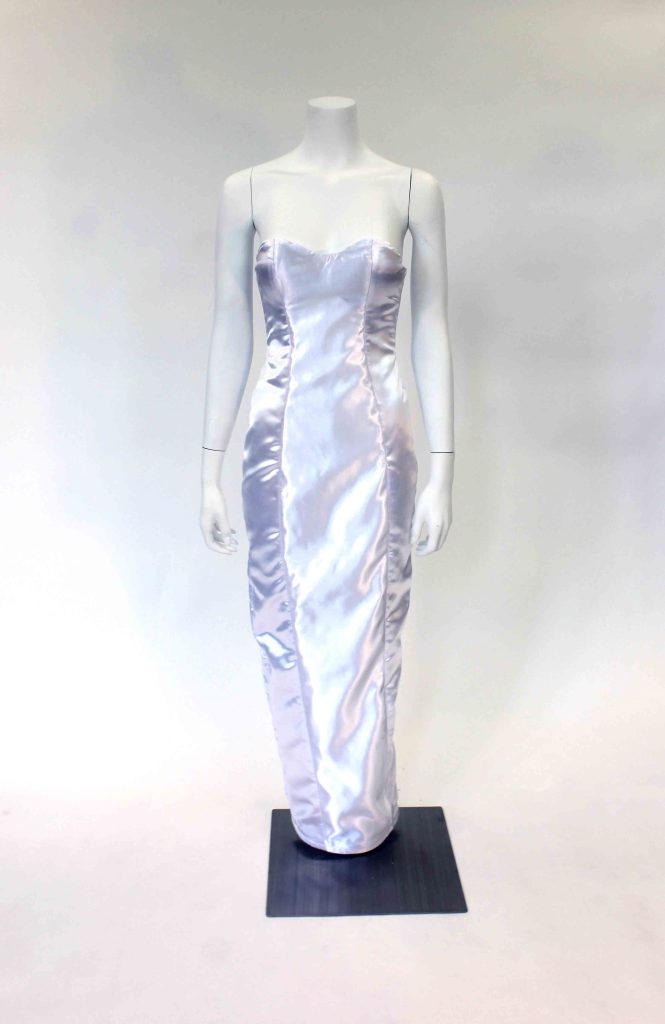
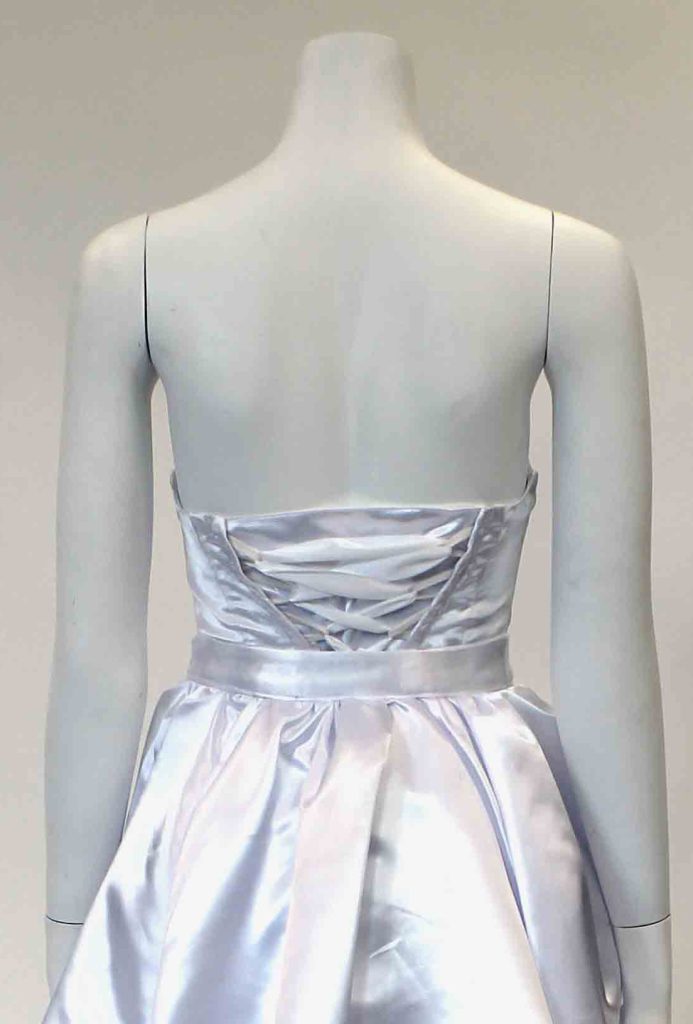
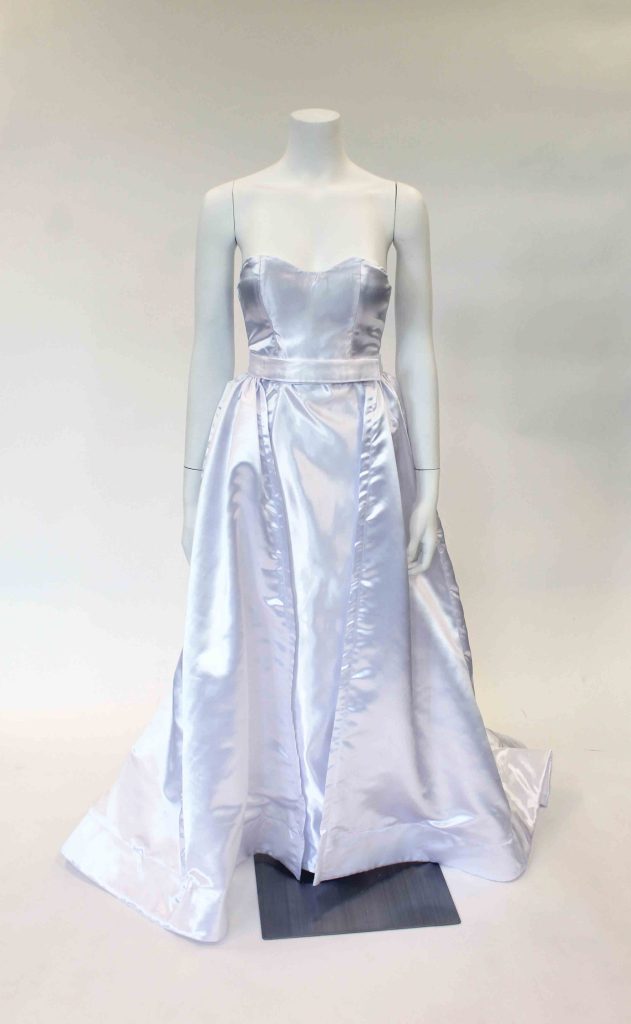
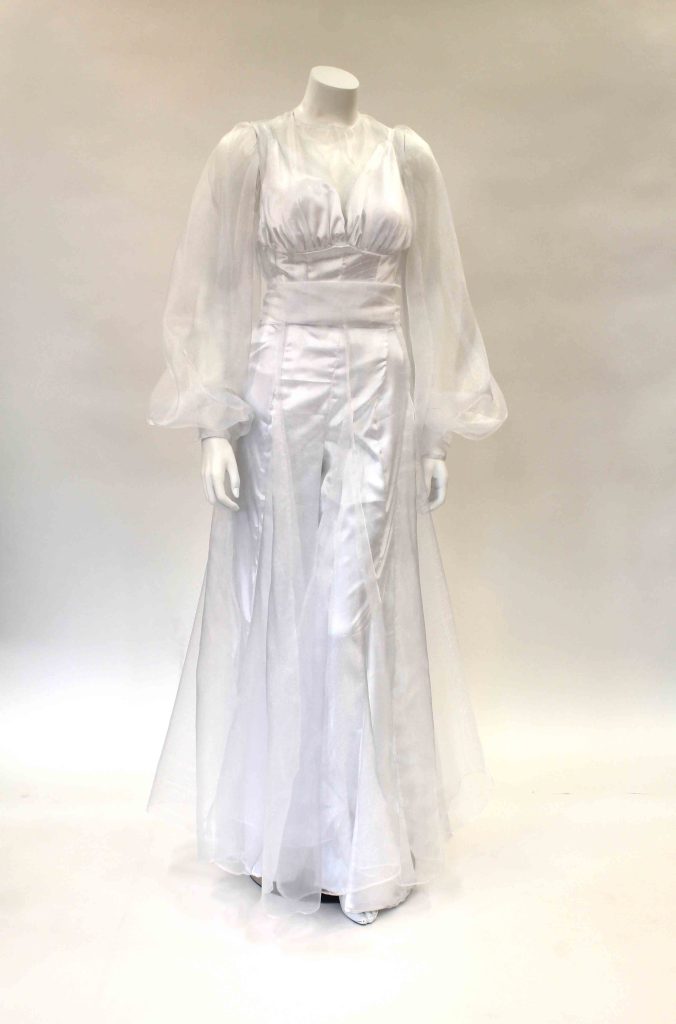
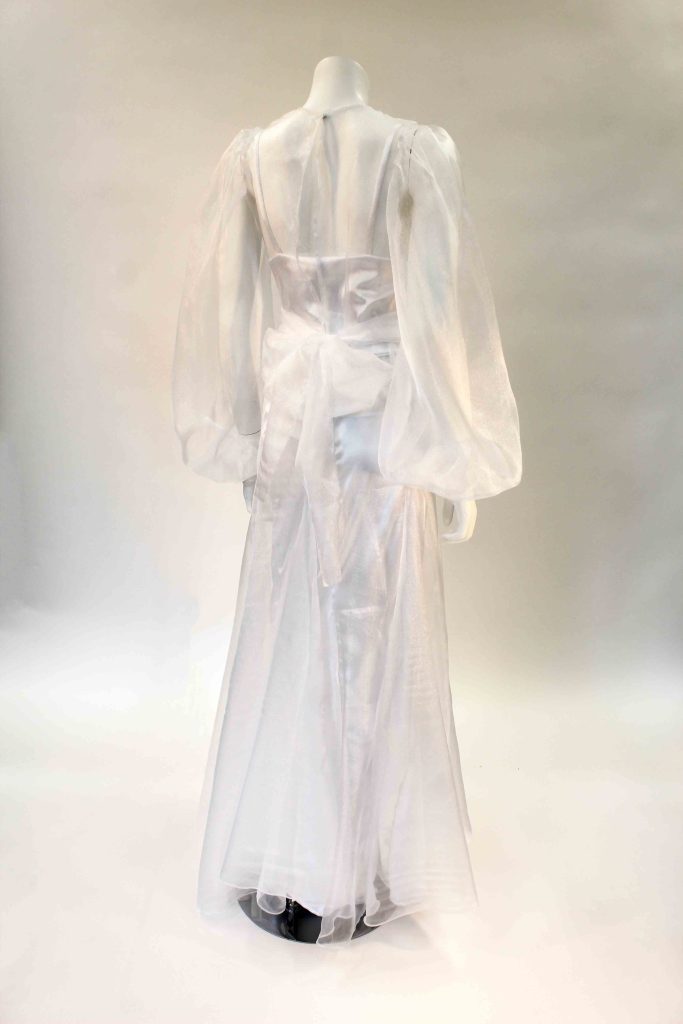

Trend inspiration included Ginger Rogers and old Hollywood elegance, as reflected in the group’s trend and inspiration boards below.

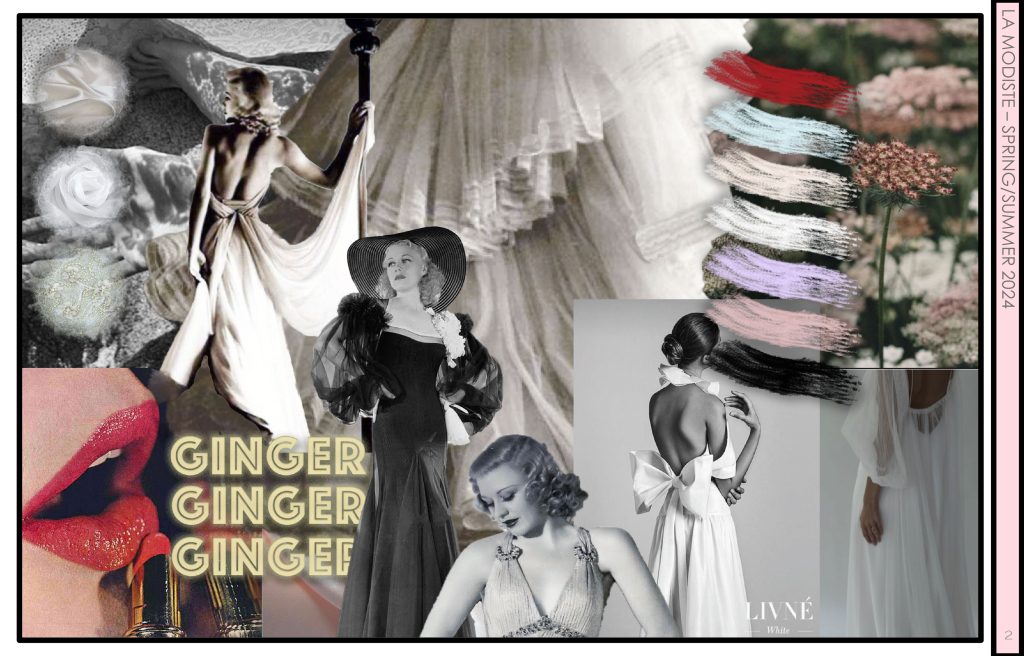
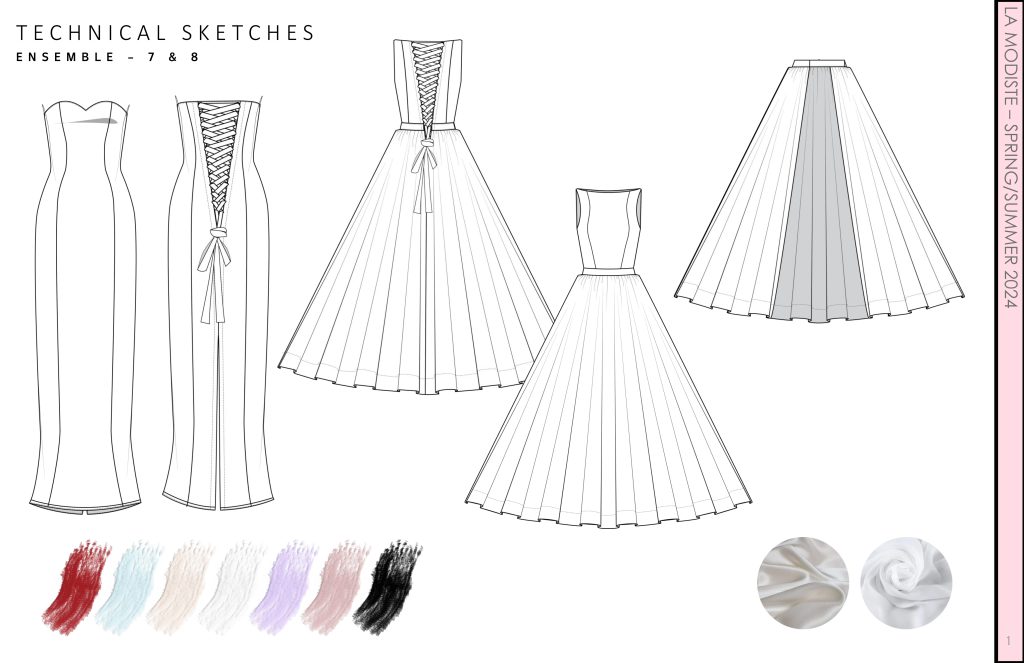
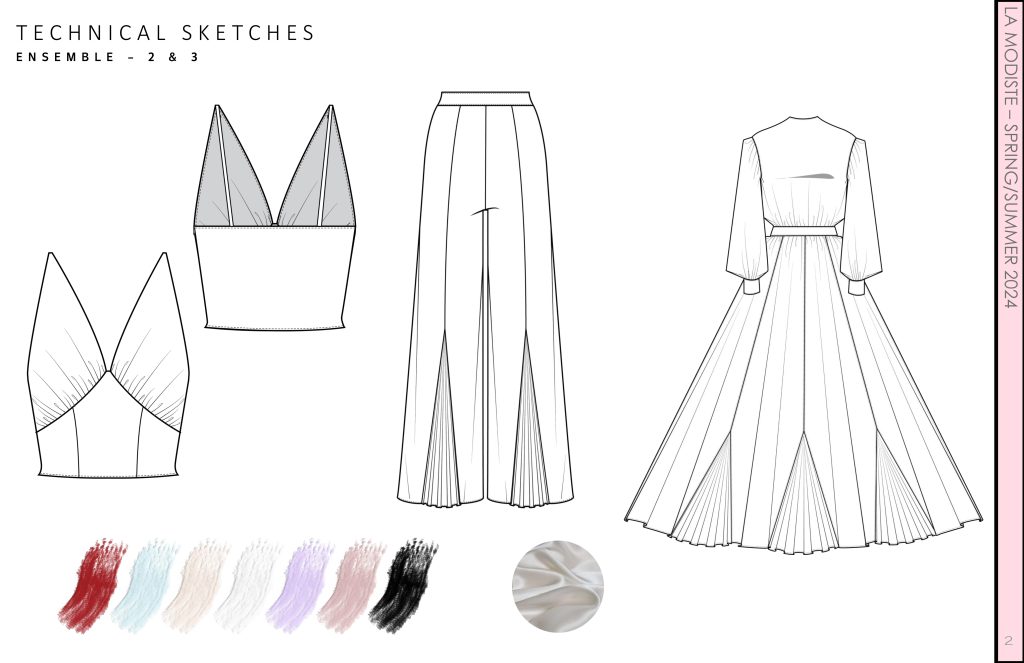
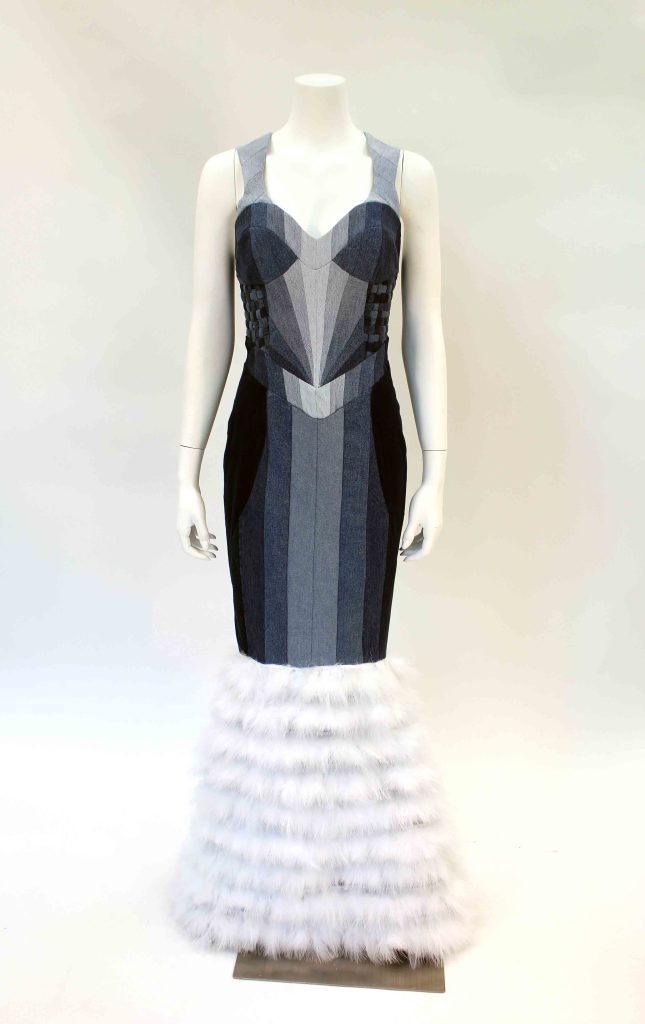
MILLIE PRECHTEL AND LINDSEY FALL “Hollywood Denim”
INCLUSIVE DESIGN: “The purpose of “Hollywood Denim” was to pay homage to Ginger Rogers while fitting into a modern market of female consumers ages 18 to 35 looking for both sustainable and fashionable items while being size-inclusive. Instead of having to purchase all new pieces as the consumer progresses through different life stages, adjustable components were incorporated to account for potential weight fluctuations. Garment patterns were made with the intention of grading up and down to accommodate sizes XS to 5XL; design silhouettes were chosen to also flatter this wide range of sizes.”
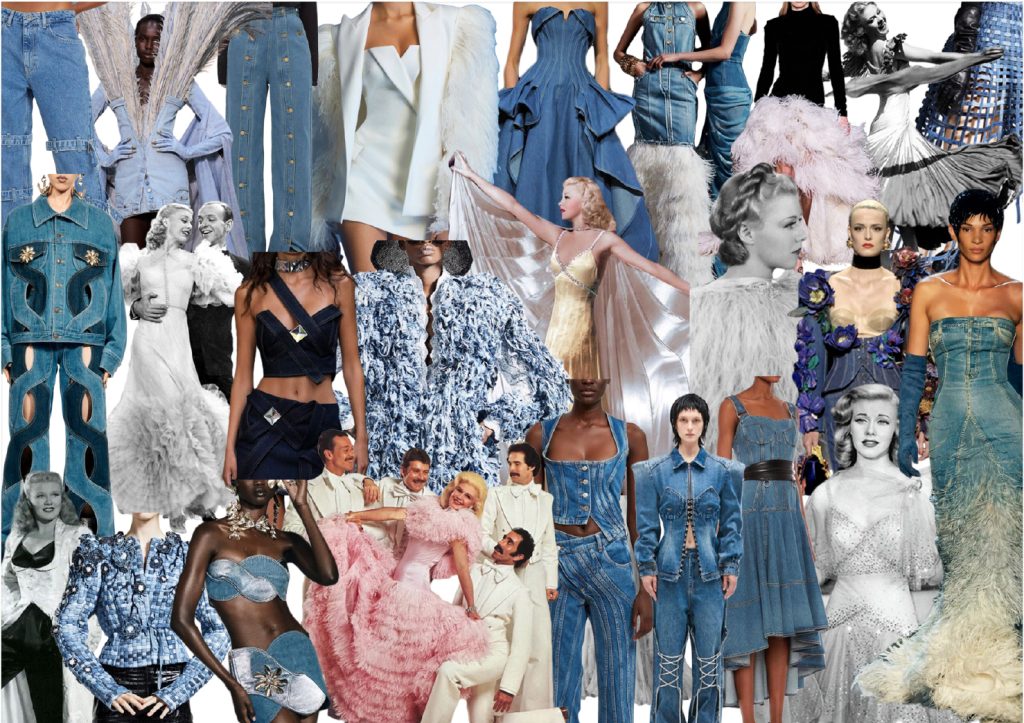
INSPIRATION: “The main inspiration for this collection is Ginger Rogers; we researched her looks and used garments from the MHCTC as reference points. Some of her main influences were feathers, embellishments and skirts with movement. The “Hollywood Denim” brand is inspired by Ginger Rogers, made sustainably with recycled denim and is size-inclusive. The elements of our garments such as the ostrich feathers and embellishments give our garments a sassy flair that will make our consumers stand out and allow them to express themselves through their personal style.”
“Emerging trends also push denim in unconventional ways which is what we are trying to achieve with our collection. Overall, 50 pairs of jeans donated by friends and family were recycled. The dress below is made from 256 individual pieces of recycled denim. Flattering design details that would appeal to our consumer include contouring lines and details that would achieve an hourglass effect on the wearer; darker colors on the outside fade into lighter colors in the middle which also help to achieve this effect. The chosen denim materials also provide a stretchy fit in areas such as the hips and bust which our consumers would find appealing and comfortable.”
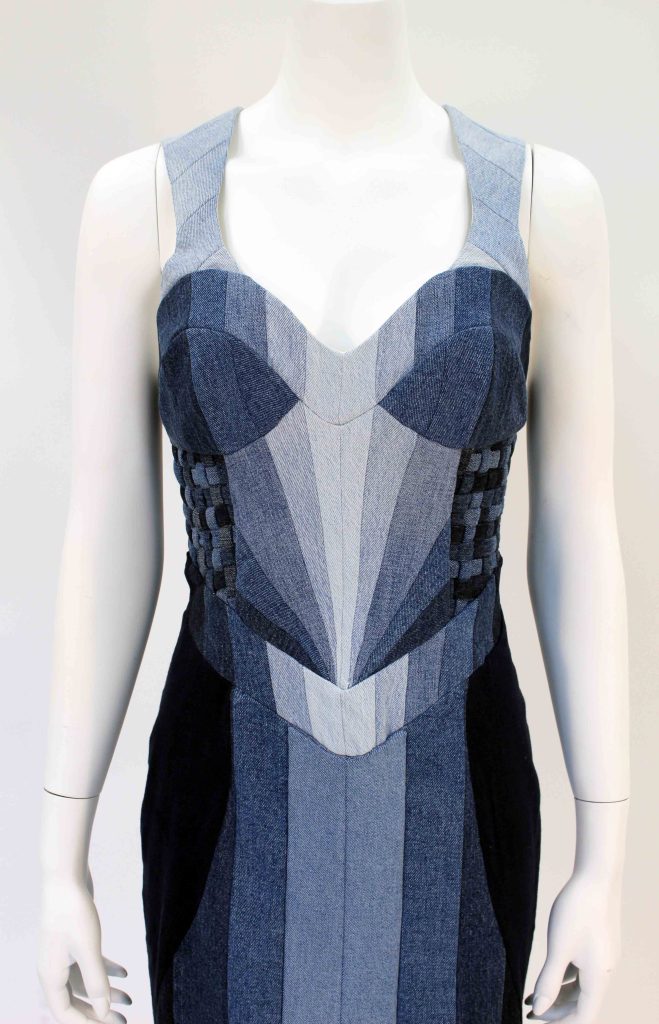
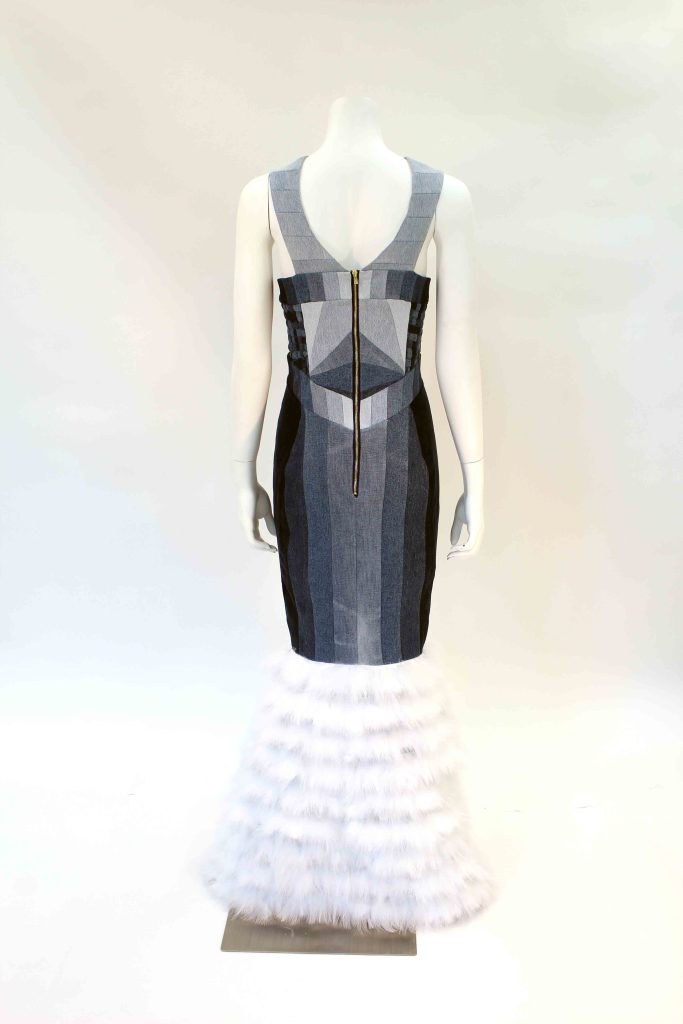


Ginger Rogers’ aesthetic is also clearly evident in the white ostrich feather trim and white pearl diamond buttons on Lindsey’s pieced denim dress. Lindsey added the features of a multi-button/snap closure and oversized fit to make her design inclusive for all consumers. “The garment to begin with is meant to be an oversized blazer dress but for the consumer to be able to adjust areas to be tight or loose was an important design approach for this garment. Along with the adjustable closure, I made sure to be aware of the different denim colors that would be flattering. I wanted this garment to be something unique and fun for this target group yet something in which they were able to feel confident and comfortable at the same time.” “I imported into CLO3D a WGSN pattern for a men’s blazer, making adjustments to match my desired pattern and design. I also modified the sizing to fit a size 8/10 and achieve an oversized look. I designed three different sleeve patterns without CLO3D to ensure a perfect fit for my garment.”
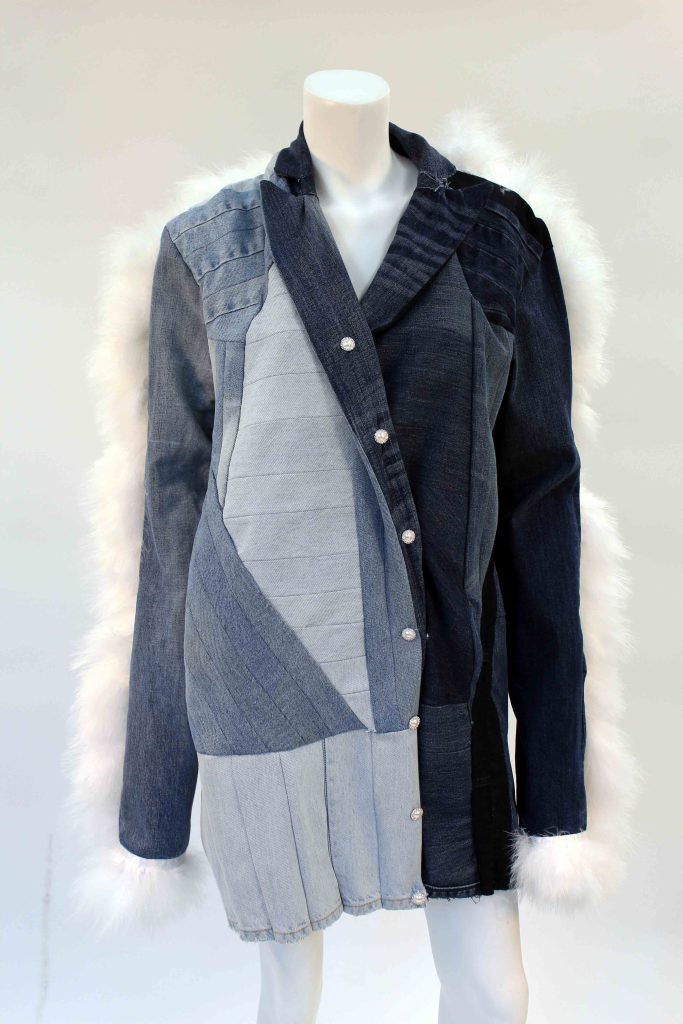
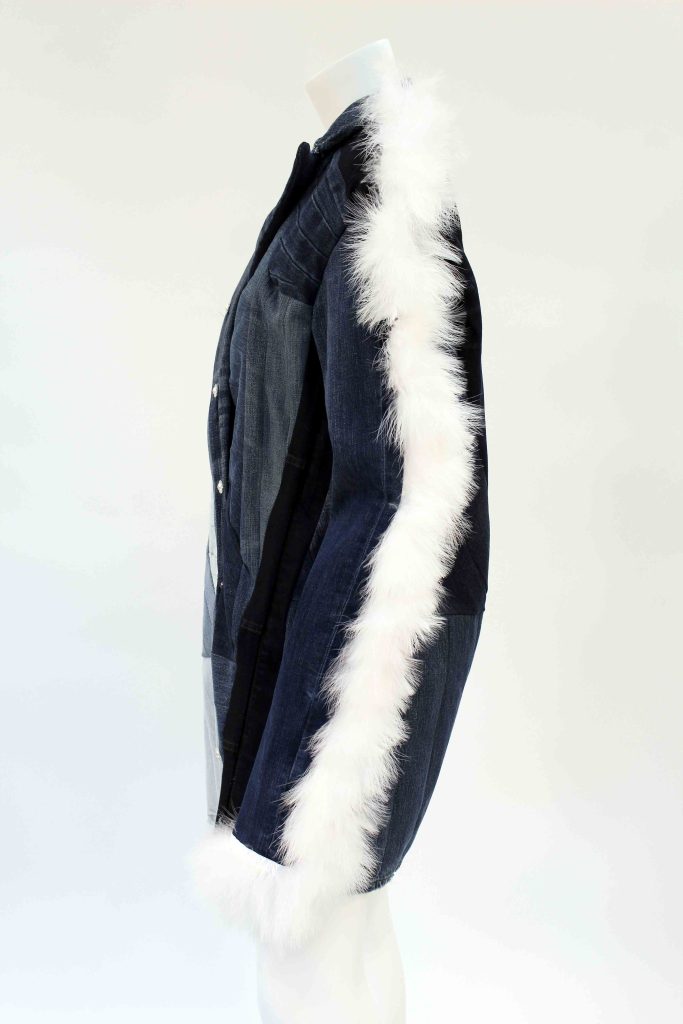
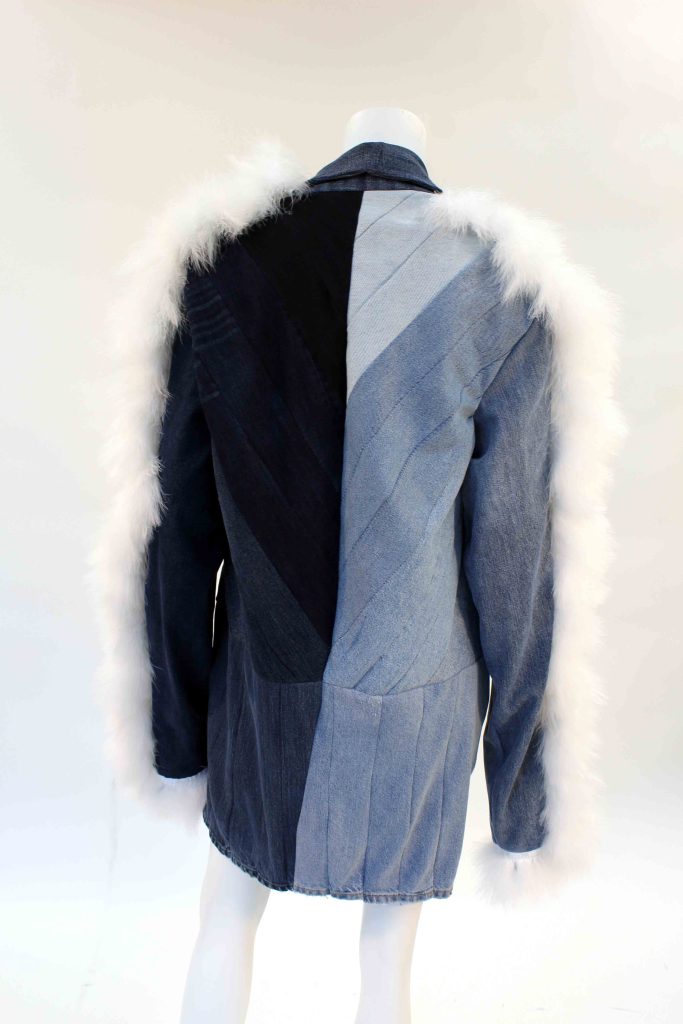
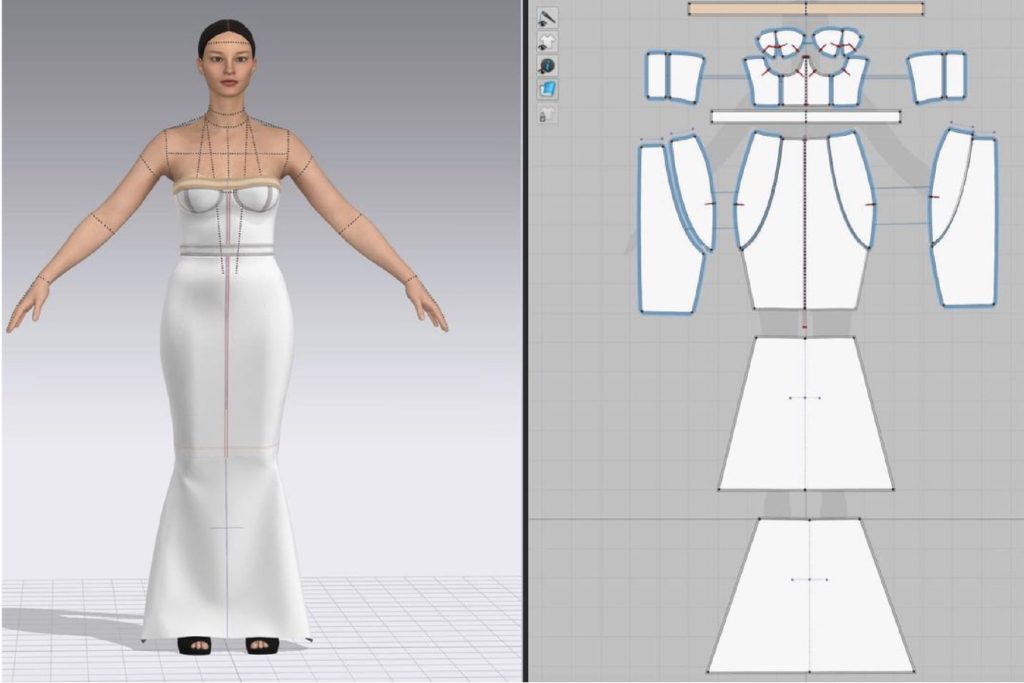

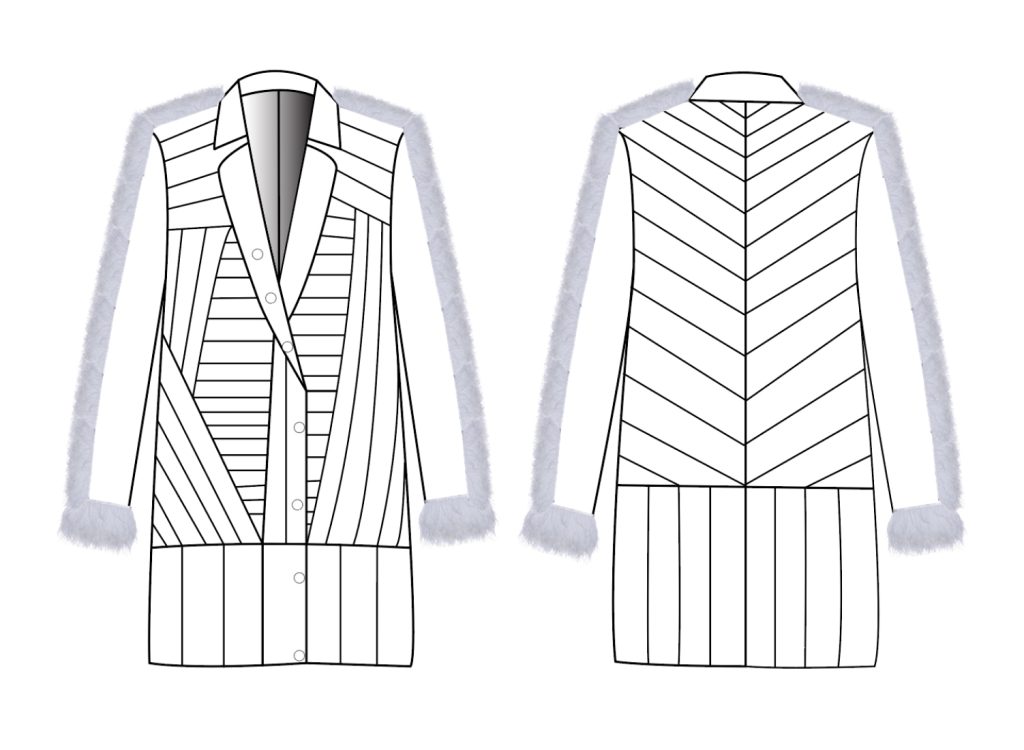

Millie continued her Ginger Project with the creation of several additional garments from the “Hollywood Denim” line. A second feather-trimmed dress, jumper and 2-piece dress were submitted to the International Youth Design Competition of the Beijing Institute of Fashion Technology’s BIFT Science Art Fashion Festival.
